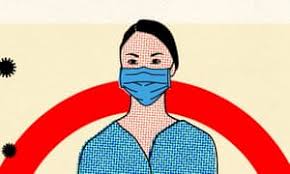
The threat of COVID-19
In 1918, 50-100 million people around the world succumbed to the “Spanish Flu” (that’s more human lives than we lost in WWI). As the novel coronavirus (COVID-19) takes hold, there are many concerned that this virus could have a similar impact if not greater. Recall in 1918, rapid transmission of this deadly virus occurred in absence of the widespread migration of today thanks to the accessibility of air travel. The coronavirus which originated in Wuhan China, has quickly spread both locally and internationally. Efforts by life science companies, governments and non-government organizations (NGOs) are underway to maintain the spread of the virus and develop effective medical treatment options.
What policy agencies, NGOs and other organizations are involved and what protection efforts are in progress?
Snowfish has partnered with multiple pharmaceutical companies on a worldwide basis to understand the roles and influence of various individuals and organizations in worldwide health. This includes China, the current epicenter of the coronavirus. Understanding their individual roles and complex relationships enables industry, societies, governments, and NGOs to create coordinated action plans.
We are seeing signs of such collaboration which is encouraging. Public health agencies such as the U.S. Centers for Disease Control and Prevention (US CDC), the Chinese Center for Disease Control and Prevention (China CDC) as well as the World Health Organization (WHO) are working hard to contain and investigate this new strain of coronavirus. Their cooperative and comprehensive approach currently revolves around early detection and isolation.
Several private and public organizations with the support of the US Food and Drug Administration (FDA) are working to identify potential therapy and vaccine candidates. They are experimenting with potential immunizations by repurposing existing vaccines, using DNA sequencing and utilizing a host of other innovative strategies. Although there have been some promising results on this front, nothing has proven viable for widespread use.
This is the type of coordination of efforts by diverse yet interconnected organizations which is key to an optimal result in such a crisis. This is fueled through existing and long-standing relationships between these critical stakeholders. Certain US and Chinese agencies have long-standing relationships. The US CDC and China CDC have a formal long-term strategic collaboration, and the officials with the US CDC assisted with the creation of China’s first National Immunization Technical Advisory Group (NITAG). What’s more, Lance E. Rodewald former director of US CDC Immunization Services Division is now senior advisor of the National Immunization Program of the China CDC. The WHO regularly collaborates with the China CDC as well as with closely affiliated professional organizations.
While not as widely publicized, mobilization of containment efforts may also take place through the efforts of professional societies. These connections are also evident through China’s unique situation with respect to professional groups. Based on experience Snowfish has had analyzing stakeholder landscapes in China, we have found that most professional organizations are linked directly or indirectly to the Chinese government. It is not rare for these societies to have Party officials in key board positions as well as to play a major role in policy development including therapy approvals.
How are stakeholder collaborations working to mitigate risk?
Worldwide government agencies and organizations have taken action:
The Chinese government is tracking down travelers who left the city of Wuhan before the new year, registering them and providing ongoing medical monitoring and treatment if symptoms appear. Those who may have been exposed are being asked to stay home for two weeks.
Wuhan just completed new hospitals solely for the purpose of containing and treating coronavirus patients. The Chinese government has also issued a travel advisory and set-up airport screening in 20 airports. All travel to and from Wuhan is temporarily shut down, and two other Chinese cities are also on lock down.
Worldwide airports have taken additional measures, including incorporating questionnaires and thermal scanners into their security process. In the US, the CDC is monitoring travelers arriving from China in 20 airports. Travel restrictions are in place.
Worldwide, healthcare organizations are putting patients who have suspected or confirmed infections in isolation to prevent the spread of disease within healthcare institutions. Because scientists are unsure how the virus spreads, isolation precautions are based on best practices until more information is available.
Pharmaceutical companies and governments leverage existing expertise
At least a dozen vaccines and several treatments are in development around the world. To name a few:
Roche reports it has developed the first commercial test for the outbreak. The new diagnostic can detect the virus in a few hours, according to the company.
Drug developers like Moderna Inc., a manufacture of mRNA vaccines, has received a grant from the Coalition for Epidemic Preparedness Innovations (CEPI) to develop a vaccine.
Johnson & Johnson has developed an Ebola vaccine, is planning to create a vaccine for 2019-nCoV.
Chinese Academy of Sciences’ Wuhan Institute of Virology found the remdesivir, chloroquine and ritonavir demonstrate inhibitory effects against the coronavirus.
AbbVie’s HIV drug Kaletra was plucked out by Chinese authorities for use against the pneumonia triggered by the novel virus.
A go forward strategy
The existing health crisis necessitates quick action by government, NGOs, and industry. However, for most disease states there is not such urgency and allow for careful planning and consideration. Understanding the roles and interconnectedness amongst key individuals (e.g., KOLs), societies, advocacy, policy organizations, government sand the initiatives they support provides a solid foundation for an optimal go-forward global strategy. To learn more, contact Snowfish at info@snowfish.net.
- Market Access: The Latest Hurdle for Treating Alzheimer’s and Dementia - June 14, 2023
- Rare Disease Outreach a Missed Opportunity - November 7, 2022
- So You Read Our Previous Post on Biomarkers? - August 1, 2022



